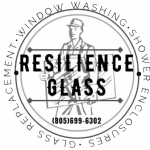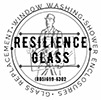Windows are essential to any home, providing natural light, ventilation, and insulation. However, homeowners face a critical decision when a window is damaged: should they repair or replace it entirely? The right choice depends on several factors, including the extent of the damage, energy efficiency considerations, and long-term costs. In this guide, we’ll explore the differences between broken window repair and replacement, the benefits of each option, and how to determine the best solution for your needs.
Damage Necessitating Broken Window Repair or Replacement
Before deciding whether to repair or replace a broken window, it’s essential to assess the type and severity of the damage. Here are some common types of window issues:
Cracked or Broken Glass
One of the most obvious signs of window damage is cracked or shattered glass. Small cracks can sometimes be repaired using resin or a patch, while more extensive breakage may require full glass replacement.
Foggy or Condensation Between Panes
If condensation forms between the panes of a double- or triple-pane window, it indicates a broken seal. When seals fail, moisture seeps inside, reducing the window’s energy efficiency and clarity.
Drafts or Air Leaks
Feeling a draft near your windows? Air leaks indicate that the seals or caulking around the frame have deteriorated. While minor leaks can be fixed with weather stripping or sealant, severe gaps may require a full replacement.
Difficulty Opening or Closing the Window
Windows that stick, jam, or won’t stay open may have issues with the frame, hardware, or balance system. Depending on the cause, simple repairs may be possible, but replacement might be the better option if the frame is warped.
Water Damage or Rotting Frames
Wooden window frames are susceptible to rot when exposed to moisture over time. Minor damage may make repairs possible, but severe rot can compromise the window’s integrity and require a replacement.
When You Need Broken Window Repair
Repairing a window is often the most cost-effective and efficient solution. Here are some situations where repairs may be the best choice:
Minor Glass Damage
If the damage involves small cracks or chips, repairing the glass can restore functionality without requiring a full replacement. Glass repair kits or professional services can fix minor damage quickly.
Worn Weather Stripping or Caulking
If your window has drafts due to deteriorated weather stripping or caulking, replacing these materials can improve energy efficiency without the need for a new window.
Hardware or Mechanism Issues
When locks, latches, or hinges break, they can often be repaired or replaced without replacing the entire window. This simple fix restores security and usability.
Seal Failure in Multi-Pane Windows
If condensation appears between panes but the frame is in good condition, repairing the seal or replacing the glass may be possible rather than installing a whole new window.
Maintaining Architectural Integrity
For older homes with custom or historic windows, repair is often preferable to replacement to preserve the house’s original aesthetic and character.
When to Replace a Broken Window
In some cases, replacing the window is the better long-term solution. Here are key scenarios where window replacement is necessary:
Extensive Glass Damage
Replacing the entire pane or unit ensures safety and prevents further issues if a window has multiple cracks or shattered glass.
Severe Water Damage or Rotting Frames
When wooden window frames show signs of significant rot, swelling, or mold, replacement is often the best option to prevent further structural issues.
Persistent Drafts and Energy Loss
If your windows are old, inefficient, and causing high energy bills, replacing them with modern energy-efficient models can save money in the long run.
Outdated Single-Pane Windows
Single-pane windows provide little insulation. Upgrading to double—or triple-pane windows enhances comfort and reduces heating and cooling costs.
Structural Damage or Warping
Windows that have become warped or misaligned due to shifting foundations or temperature changes may not function properly and require replacement.
Increasing Home Value
If you plan to sell your home, installing new windows can improve curb appeal and boost resale value, making it a worthwhile investment.
Broken Window Repair vs. Replacement Cost Considerations
Cost is a significant factor in deciding whether to repair or replace a broken window. Below is a general comparison of average costs:
Glass Repair
Minor cracks and chips in a window can often be repaired for $50 to $200, depending on the severity of the damage. Professional glass repair restores clarity and structural integrity while maintaining insulation properties.
Hardware Replacement
Replacing faulty window locks, hinges, or handles costs between $50 and $150, depending on the hardware type and installation complexity. Upgrading or repairing hardware improves window security and ease of operation.
Weather Stripping & Caulking
Sealing air leaks with new weather stripping and caulking typically costs $30 to $100, making it a cost-effective way to improve energy efficiency. This simple upgrade helps prevent drafts, reduces energy bills, and enhances overall window performance.
Seal Repair for Foggy Windows
Fixing a broken seal in double- or triple-pane windows costs between $150 and $300, depending on the window size and type. Proper seal repair restores insulation, eliminates condensation between panes, and extends the window’s lifespan.
Full Window Replacement
A full window replacement costs between $300 and $1,200 per window, varying based on materials, size, and energy-efficient features. This option is ideal for severely damaged, outdated, or inefficient windows, improving comfort and home value.
While repairs may initially seem more affordable, replacing outdated or severely damaged windows can lead to long-term savings on energy bills and maintenance costs.
DIY vs. Professional Broken Window Repair and Replacement
Some minor repairs can be handled as DIY projects, while others require professional expertise.
DIY Repairs Suitable for Homeowners
Simple fixes, such as sealing gaps, tightening hardware, and repairing minor cracks, can help maintain window efficiency and function without professional assistance.
Replacing Weather Stripping or Caulking
Weather stripping and caulking are simple yet effective ways to seal air leaks and improve energy efficiency. Applying fresh caulk or weather stripping prevents drafts, reduces energy costs, and extends the lifespan of your windows.
Tightening or Replacing Loose Hardware
Loose or worn-out locks, hinges, and handles can make windows difficult to open or close. Replacing or tightening these components restores functionality and enhances security without professional assistance.
Fixing Minor Cracks With Glass Repair Kits
Small cracks and chips in window glass can often be repaired using a DIY glass repair kit. These kits help prevent further damage and maintain the structural integrity of the glass while avoiding costly replacements.
When to Hire a Professional
Professional expertise ensures safety and long-term performance for major window issues, such as broken seals, large glass replacements, or structural damage.
Replacing Large Glass Panes or Multi-Pane Windows
Handling large or heavy glass requires specialized tools and expertise to ensure safe window installation. Professionals can replace broken panes efficiently while minimizing the risk of injury or improper sealing.
Repairing Broken Seals in Double or Triple-Pane Windows
Failed seals allow moisture between panes, reducing energy efficiency and causing foggy glass. A professional can restore the seal properly, preventing further condensation and improving insulation.
Replacing Severely Damaged or Warped Frames
Rotting, warped, or cracked frames compromise the integrity of the window and the home’s insulation. A professional replacement ensures a secure, weather-tight fit, preventing structural issues and energy loss.
Ensuring Proper Insulation and Energy Efficiency
Properly installed windows are crucial for maintaining indoor comfort and reducing energy costs. Professionals use precise techniques to seal gaps, install energy-efficient materials, and optimize insulation for long-term performance.
Professional services guarantee high-quality repairs and replacements, ensuring your windows remain secure, functional, and energy-efficient.
Choosing the Right Windows for Replacement
If you decide to replace your windows, consider the following factors:
Frame Material
The type of frame you choose impacts durability, insulation, and maintenance requirements.
Vinyl
Vinyl frames are low-maintenance, resistant to moisture, and provide excellent insulation for energy efficiency. They are also affordable, making them a popular choice for homeowners.
Wood
Wood frames offer a timeless, classic look but require regular upkeep to prevent rot and warping. While they provide natural insulation, they may need repainting or refinishing over time.
Aluminum
Aluminum frames are highly durable and corrosion-resistant but do not offer the best insulation. They are ideal for modern aesthetics and areas with mild climates.
Fiberglass
Fiberglass frames are strong, weather-resistant, and highly energy-efficient, making them a long-term investment. They expand and contract minimally, reducing the risk of seal failure.
Window Style
Choosing the right window style affects both functionality and design appeal.
Double-Hung
These traditional windows have two operable sashes that slide up and down, making them easy to clean. They provide great ventilation and suit a wide range of home styles.
Casement
Casement windows are hinged on the side and swing outward for maximum airflow and ventilation. When closed, their tight seal improves energy efficiency and weather resistance.
Sliding
Sliding windows move horizontally on a track, offering a sleek, modern look while saving space. They are easy to operate and provide wide, unobstructed views.
Bay/Bow
These windows extend outward from the home, creating additional interior space and enhancing natural light. They add a striking architectural feature while improving airflow and visibility.
Energy Efficiency Ratings
Selecting energy-efficient windows helps reduce heat transfer and lowers energy bills. Look for Energy Star-certified windows to maximize energy savings. These windows meet strict energy efficiency guidelines and reduce heating and cooling costs.
Deciding Between Broken Window Repair or Replacement
Deciding whether to repair or replace a broken window depends on the severity of the damage, energy efficiency needs, and long-term costs. Choose repair if the damage is minor, such as small cracks, worn seals, or hardware issues. Opt for replacement if the window is severely damaged, inefficient, or outdated. Investing in quality window solutions improves comfort, enhances your home’s appearance, and reduces energy costs. If unsure about the best option, consult a professional for an expert assessment.
Check out our Resilience Glass blog today for expert advice, repair tips, and professional window solutions!






